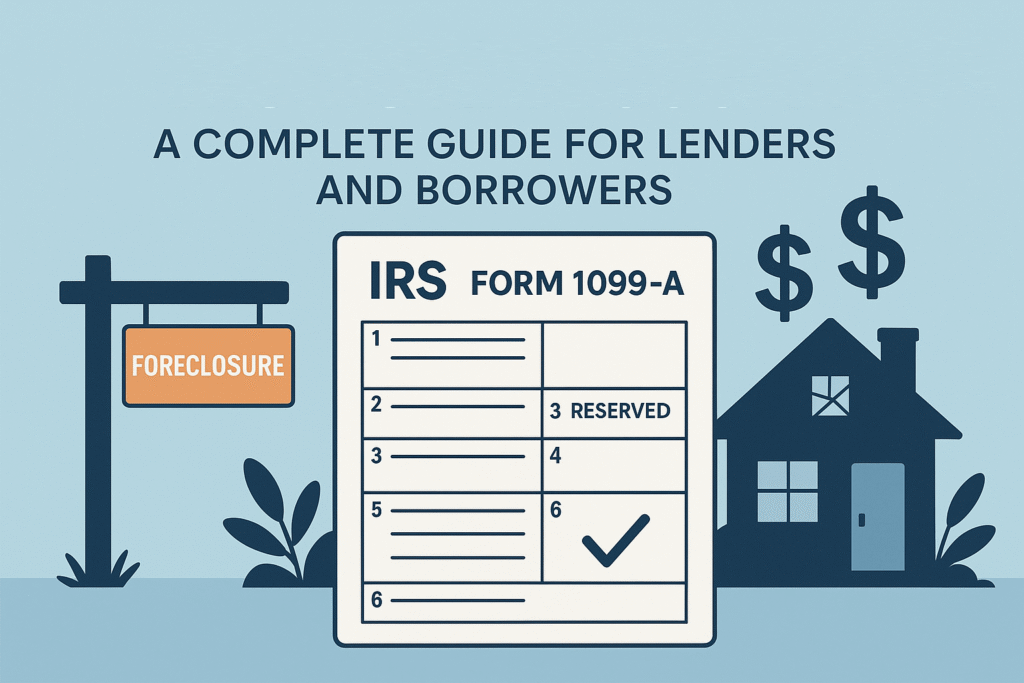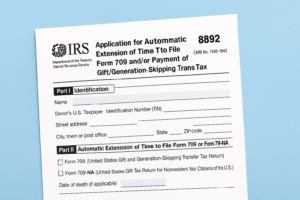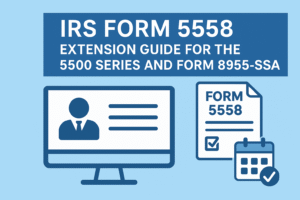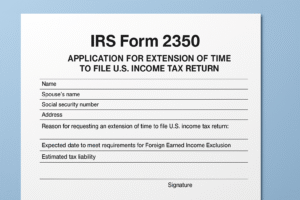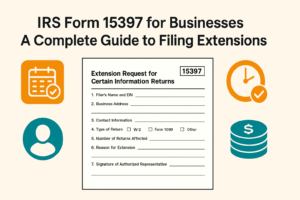In the world of lending and real estate, certain events—like foreclosures or abandoned properties—can have tax implications that require formal reporting to the IRS. One such reporting obligation arises through IRS Form 1099-A, used to document the acquisition or abandonment of secured property. This form ensures transparency when property used as loan collateral is either repossessed or voluntarily surrendered.
This article explores what Form 1099-A is, who must file it, when it’s due, how to complete and file it correctly, and what borrowers need to do upon receiving it.
What Is Form 1099-A?
Form 1099-A, titled “Acquisition or Abandonment of Secured Property,” is an IRS information return that reports when a lender:
- Acquires property securing a loan (such as through foreclosure or repossession), or
- Becomes aware that a borrower has abandoned such property.
The IRS uses this information to track whether a borrower may have realized a taxable gain or loss, and whether any canceled debt should be included in their income. Although Form 1099-A doesn’t directly report forgiven debt, it often accompanies Form 1099-C, which does.
Who Must File Form 1099-A?
Generally, the responsibility to file Form 1099-A lies with the lender or holder of the security interest when they acquire the secured property or know it has been abandoned. This includes financial institutions, mortgage lenders, government loan agencies, auto finance companies, and any business regularly engaged in lending.
For example, if a national bank forecloses on a residential mortgage because the borrower has defaulted, the bank must file Form 1099-A to report the acquisition of the property. Similarly, if a borrower walks away from a commercial property without formally transferring ownership, and the lender becomes aware of this abandonment, the lender is obligated to file the form.
Consider another case: A car buyer defaults on their auto loan, and the financing company repossesses the vehicle. Here, the finance company must file Form 1099-A to report the acquisition of the secured vehicle. Even in instances where a borrower voluntarily transfers ownership through a deed in lieu of foreclosure, the lender is required to file the form because they’ve acquired an interest in the secured property.
However, if a private individual—such as a friend or family member—loans money and ends up taking ownership of a pledged asset without being in the business of lending, they are typically not required to file Form 1099-A.
When Is the Deadline to File Form 1099-A?
The IRS has established specific deadlines for submitting Form 1099-A:
- To the borrower (recipient copy): Must be furnished by January 31.
- To the IRS (paper filing): Must be submitted by February 28.
- To the IRS (electronic filing): Must be submitted by March 31.
If any of these dates fall on a weekend or legal holiday, the deadline is extended to the next business day. E-filing is mandatory if you’re submitting 10 or more information returns.
Information Required to Complete Form 1099-A
To properly complete Form 1099-A, the filer must collect the following information:
- Name, address, and Taxpayer Identification Number (TIN) of both the borrower and the lender
- A description of the property (e.g., real estate address or vehicle identification)
- Date of acquisition or when the lender became aware of abandonment
- Balance of unpaid principal on the loan
- Fair Market Value (FMV) of the property
- Whether the borrower was personally liable for the debt
Accuracy is critical, as incorrect entries can lead to IRS penalties or misreporting by the borrower.
How to Complete Form 1099-A (Line-by-Line Instructions)
Here’s a breakdown of each section on Form 1099-A and how to fill it out correctly:
- Box 1 – Date of Acquisition or Abandonment:
Enter the date when the property was officially acquired by the lender or the date they became aware of the abandonment. - Box 2 – Balance of Principal Outstanding:
Report the remaining principal loan balance at the time of acquisition or abandonment. This excludes any interest, fees, or penalties. - Box 3 – Reserved:
This box is currently not used. Leave it blank. - Box 4 – Fair Market Value (FMV) of the Property:
Indicate the FMV of the property as of the date in Box 1. Use a reliable method such as an appraisal or recent sale data. - Box 5 – Borrower Personally Liable for the Debt?:
Check the box if the borrower was personally liable (a recourse loan). If not, leave it unchecked (nonrecourse loan). - Box 6 – Description of Property:
Provide a brief but specific description of the property. For real estate, include the address; for a vehicle, the year, make, and model.
Ensure you also file Form 1096 as a transmittal form if filing paper copies.
How to File Form 1099-A
Form 1099-A can be filed using two methods:
1. Electronic Filing
Lenders submitting 10 or more information returns must e-file via the IRS FIRE (Filing Information Returns Electronically) system. It’s a secure platform for bulk submission and doesn’t require Form 1096.
2. Paper Filing
If you’re filing fewer than 10 forms, you may send Copy A of Form 1099-A to the IRS along with Form 1096. Use only the official red-ink scannable version of Copy A.
Regardless of the filing method, you must also provide Copy B of Form 1099-A to the borrower by the January 31 deadline.
Penalties for Not Filing Form 1099-A
The IRS imposes penalties for failing to file, filing late, or submitting incorrect forms. Penalties are assessed per form, and they increase based on how late the filing is.
| Filing Timeframe | Penalty per Form | Max Penalty for Small Businesses |
| ≤ 30 days late | $60 | $630,500 |
| 31 days to Aug 1 | $120 | $1,771,000 |
| After Aug 1 | $310 | $3,532,500 |
| Intentional Disregard | $630+ | No Limit |
Note: Separate penalties apply if you fail to provide the recipient copy.
How to Extend the 1099-A Filing Deadline
To request additional time for filing with the IRS, use Form 8809 (Application for Extension of Time to File Information Returns). This provides an automatic 30-day extension, but only for submitting the IRS copy—not the borrower copy.
If you need more time to furnish the borrower’s copy due to extreme hardship (such as a natural disaster or serious illness), you must make a written request with supporting documentation. These extensions are granted only under extraordinary circumstances.
Exceptions to Filing Form 1099-A
Not every case involving a loan default or property transfer requires Form 1099-A. Exceptions include:
- The loan is unsecured (e.g., credit cards, personal loans).
- The borrower redeems the property before it is acquired or abandoned.
- The lender is a private individual not engaged in the business of lending.
- A Form 1099-C is issued covering the same transaction and acquisition.
Lenders should review the latest IRS instructions to ensure they’re filing appropriately.
What Should Recipients (Borrowers) Do with Form 1099-A?
Borrowers who receive Form 1099-A should carefully review the form and consider how it may affect their taxes. The key steps include:
- Verify Accuracy:
Confirm that the information in Boxes 2 (loan balance), 4 (FMV), and 5 (personal liability) is correct. - Determine Gain or Loss:
The borrower may need to calculate a capital gain or loss based on the FMV and outstanding debt. This often applies if the property is a business or investment asset. - Report on Tax Return:
Depending on the type of property and the nature of the debt, the borrower may need to report the transaction on Schedule D, Form 8949, or Form 4797. - Watch for Form 1099-C:
If the lender cancels the debt, the borrower may receive Form 1099-C, which could trigger taxable income unless an exclusion (like insolvency) applies.
Tax consequences can vary greatly depending on whether the debt was recourse or nonrecourse and the type of property involved, so it’s advisable to consult a tax professional.
Final Thoughts
IRS Form 1099-A is a crucial document in situations involving foreclosures, repossessions, or the abandonment of secured property. For lenders, timely and accurate filing is essential to remain in compliance with IRS rules and avoid penalties. For borrowers, receiving Form 1099-A signals a need to review potential tax consequences and ensure proper reporting on their return.
By understanding who must file, how to fill it out, and how it impacts both parties, lenders and borrowers alike can navigate the financial and tax complexities of secured property transfers with clarity and confidence.

